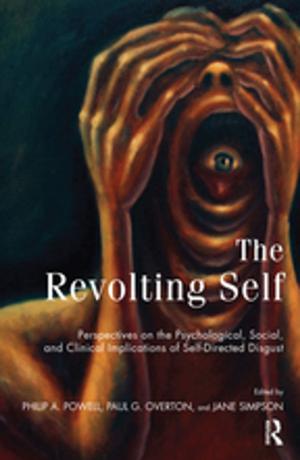| Author: | Ira D. Glick, Sidney J. Levy, W. Lloyd Warner, Kurt Lang | ISBN: | 9781351508384 |
| Publisher: | Taylor and Francis | Publication: | July 12, 2017 |
| Imprint: | Routledge | Language: | English |
| Author: | Ira D. Glick, Sidney J. Levy, W. Lloyd Warner, Kurt Lang |
| ISBN: | 9781351508384 |
| Publisher: | Taylor and Francis |
| Publication: | July 12, 2017 |
| Imprint: | Routledge |
| Language: | English |
This book is based on extensive field research conducted by the investigators of Social Research Inc., interpreting the result of over 13,000 individuals. Members of TV audiences were studied to analyze their reactions to what TV offered them, in relation to their age, sex, social class, and personal characteristics. This information is here applied to understanding what television programs, performers, and commercials--by general type and also with illustrative case histories--are being watched. This book on first publication in 1962 provided the first clear image of the people in front of their TV sets, who they were, how they differed from each other, their views on sex and violence, boredom and enlightenment, taste and judgment. It tells us about the audiences and our stereotypes and their response to the new medium they could both see and hear. It destroys the myth of the "mass audience" and replaces it with a scientifically derived description of the many audiences for television, including its protesters, its embracers, and its accommodators. Programs looked at range from those still in production forty years later--The Price is Right--to those in perpetual rerun--The Twilight Zone---to those genres, like westerns, that have all but disappeared, and those that still prosper, like soap operas--in this case, 77 Sunset Strip. A section on performer images and their symbolic meanings considers television personas from Bob Hope through Walter Cronkite to Roy Rogers and Pat Boone. The final section analyzes commercials both by type and by placement and what audiences feel about them.
This book is based on extensive field research conducted by the investigators of Social Research Inc., interpreting the result of over 13,000 individuals. Members of TV audiences were studied to analyze their reactions to what TV offered them, in relation to their age, sex, social class, and personal characteristics. This information is here applied to understanding what television programs, performers, and commercials--by general type and also with illustrative case histories--are being watched. This book on first publication in 1962 provided the first clear image of the people in front of their TV sets, who they were, how they differed from each other, their views on sex and violence, boredom and enlightenment, taste and judgment. It tells us about the audiences and our stereotypes and their response to the new medium they could both see and hear. It destroys the myth of the "mass audience" and replaces it with a scientifically derived description of the many audiences for television, including its protesters, its embracers, and its accommodators. Programs looked at range from those still in production forty years later--The Price is Right--to those in perpetual rerun--The Twilight Zone---to those genres, like westerns, that have all but disappeared, and those that still prosper, like soap operas--in this case, 77 Sunset Strip. A section on performer images and their symbolic meanings considers television personas from Bob Hope through Walter Cronkite to Roy Rogers and Pat Boone. The final section analyzes commercials both by type and by placement and what audiences feel about them.















